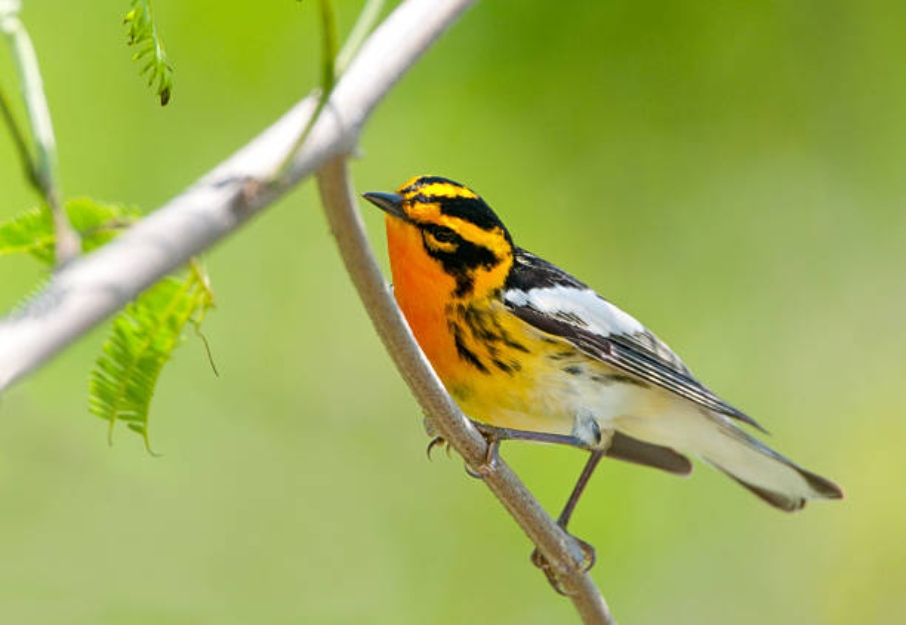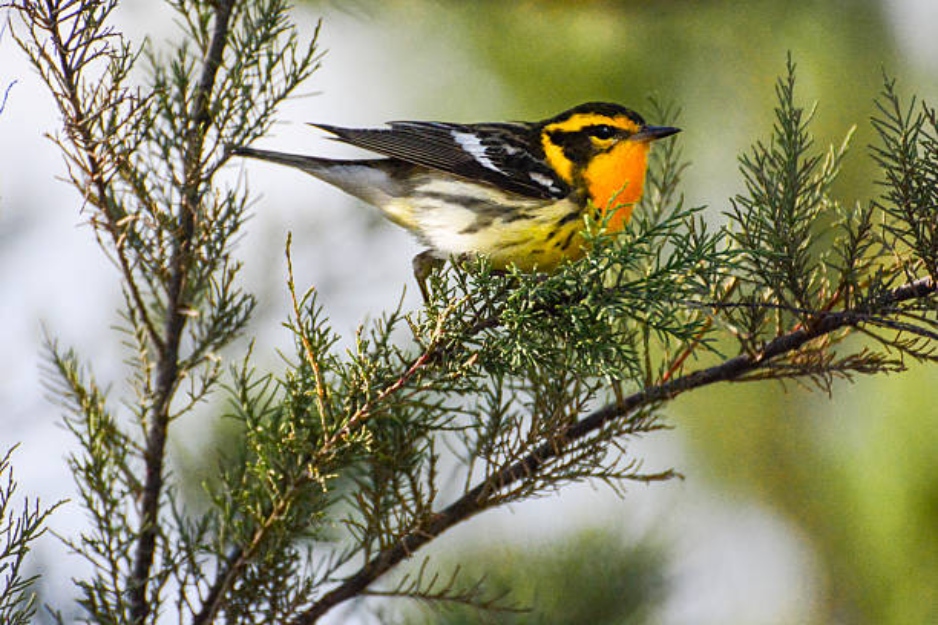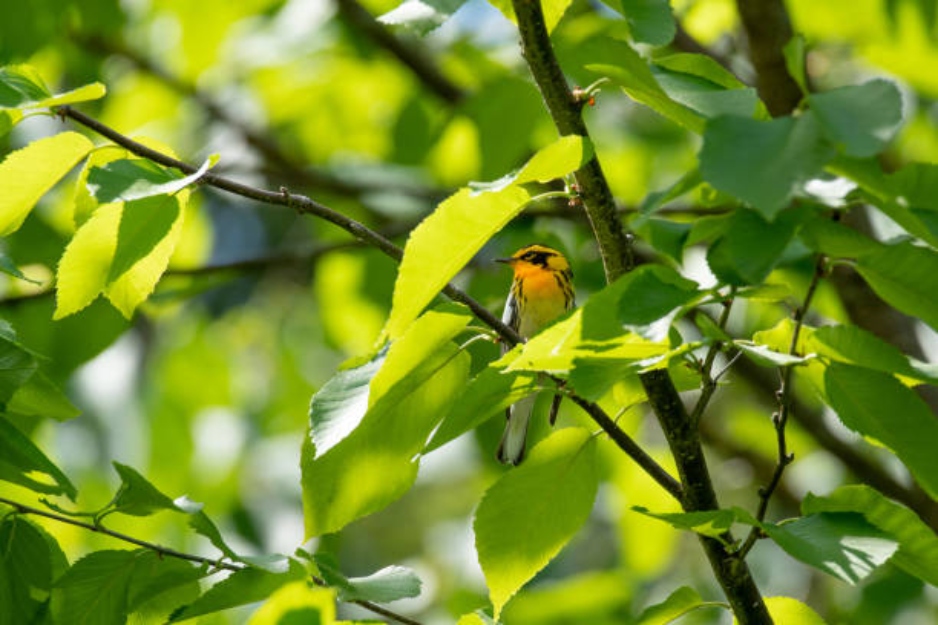
In a quiet village in Somerset, England, an unexpected visitor has created a birdwatching frenzy. A small backyard in Bridgwater has become the center of attention for hundreds of bird enthusiasts after a North American bird species, the Blackburnian Warbler, was spotted there. The bird, known for its striking orange and black plumage, was blown off course by Hurricane Otis and ended up thousands of miles from its usual habitat.
Unlikely Arrival Amidst Chaos

Hurricane Otis, which recently devastated parts of Central America, is believed to have disrupted migratory patterns, forcing many birds to stray from their routes. The Blackburnian Warbler, typically found in the forests of North America, is rarely seen in Europe. Local resident Margaret Henson, 63, first noticed the bird while sipping her morning tea. “I thought I was seeing things. It was so bright, so unusual,” she said. After consulting her bird guidebook, she quickly realized the rarity of the sighting and contacted a local birdwatching group.
Birdwatchers Descend in Droves

News of the warbler’s arrival spread like wildfire through social media and birding forums. By the next morning, Henson’s modest garden was filled with binocular-wielding enthusiasts. Some traveled from as far as Scotland, braving long train rides to witness the avian spectacle. “It’s a once-in-a-lifetime opportunity,” said Peter Rowe, a keen birder from Newcastle. “I’ve been birdwatching for 30 years, and I never thought I’d see this species in the UK.”
A Surge in Local Economy

The influx of visitors has also benefited the local community. Nearby cafés and shops reported a spike in business as birdwatchers sought refreshments during their visit. “We’ve been selling out of sandwiches and tea,” said Tom Warner, owner of the village café. “It’s great to see so many new faces, even if it’s a bit unexpected.”
Concerns for the Bird’s Well-Being

While the excitement is palpable, conservationists have raised concerns about the warbler’s welfare. The bird, unaccustomed to the British climate and diet, may struggle to survive. The Royal Society for the Protection of Birds (RSPB) has advised onlookers to maintain a respectful distance and avoid feeding it. “These birds are resilient, but the stress of being far from their natural habitat can take its toll,” said Dr. Emily Carter, a senior ornithologist.
Historical Context of Avian Wanderers

This isn’t the first time a wayward bird has caused a stir in the UK. In 2010, a Siberian Rubythroat, another rare visitor, attracted similar crowds in Norfolk. More recently, in 2022, a Steller’s Sea Eagle captivated birdwatchers when it appeared in Scotland. Experts note that extreme weather events linked to climate change are increasing the frequency of such occurrences.
Social Media Amplifies Buzz

The power of social media has amplified the Blackburnian Warbler’s fame. Photos and videos of the bird have gone viral, with hashtags like #HurricaneWarbler and #SomersetSighting trending on Twitter. However, the increased attention has also brought challenges, including overcrowding in Henson’s garden. “I never thought my backyard would turn into a tourist hotspot,” she joked.
Local Efforts to Manage Crowds

To manage the surge of visitors, the local council has stepped in, organizing designated viewing times and setting up barriers to protect both the bird and the property. Volunteers from the local birdwatching group are on-site to provide information and ensure responsible behavior. “It’s a delicate balance between sharing this incredible sighting and protecting the bird,” said council member Rachel Morris.
A Bittersweet Goodbye Looms

As the warbler gains strength, experts anticipate it will soon continue its journey, likely heading back towards the Americas. Birdwatchers are making the most of the time they have to see it, with many spending hours in the garden, hoping for one last glimpse. “It’s bittersweet,” said Henson. “I’ll miss it, but I’m glad it brought so much joy to so many people.”
A Reminder of Nature’s Wonders

The Blackburnian Warbler’s unexpected visit serves as a poignant reminder of nature’s unpredictability and resilience. While the bird’s appearance may have been unplanned, it has brought a community together, fostering a deeper appreciation for the natural world. As one visitor aptly put it, “Sometimes, the rarest treasures appear when we least expect them.”
Stay connected with us for more stories like this! Follow us to get the latest updates or hit the Follow button at the top of this article, and let us know what you think by leaving your feedback below. We’d love to hear from you!







